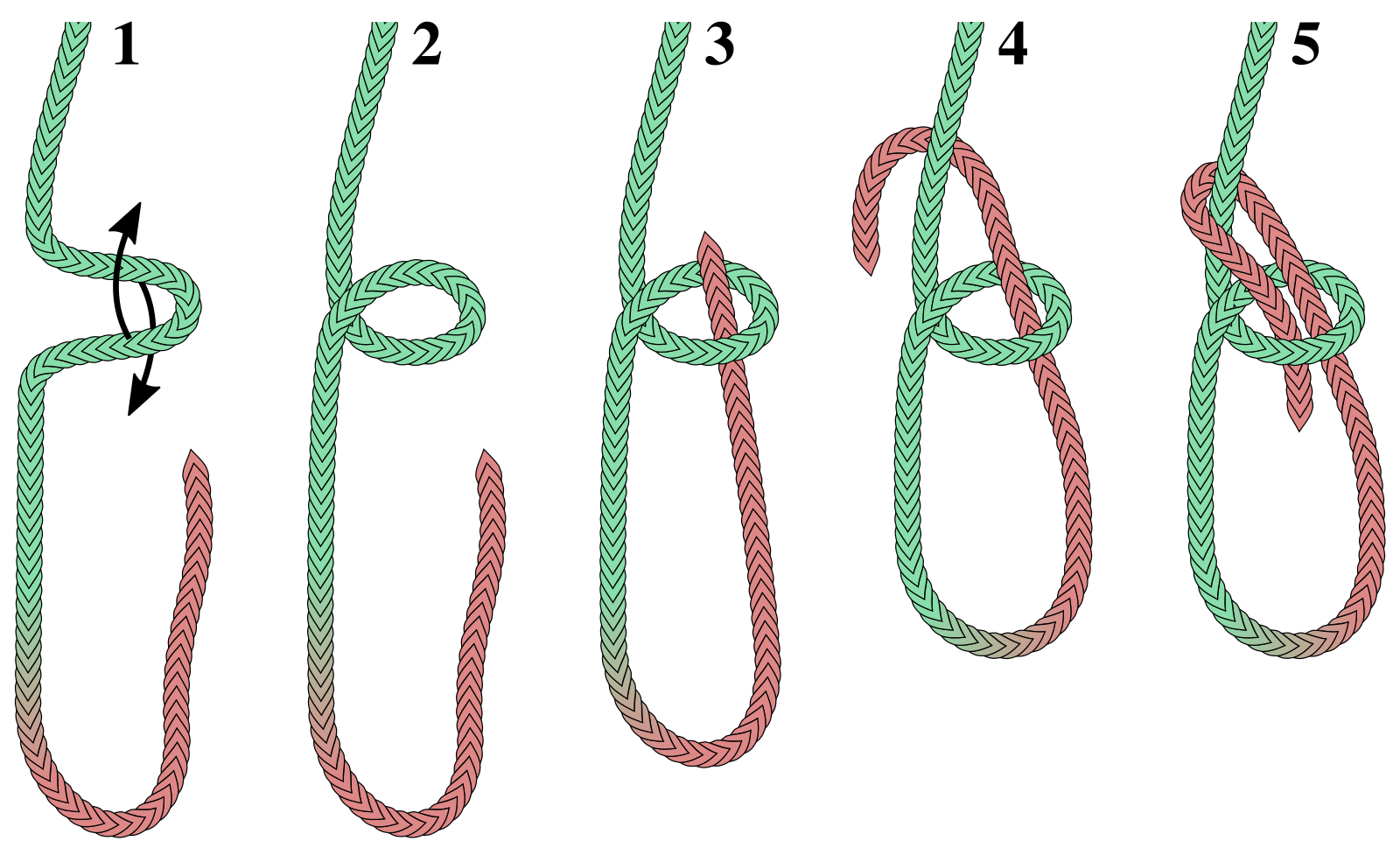|
Triple Bowline
The triple bowline knot is a variation of the bowline knot. The knot can be applied to emergency situations, such as mountain rescue. Etymology The name comes from the three loops that would be formed by tying this knot. Tying The knot is tied in the same way the original bowline is, except with a doubled rope (using a bight). An overhand loop is formed in the rope, the working end is passed back through that loop, behind the standing part of the rope, back through the loop and pulled tight. The working end (bight) forms a third loop, often larger than the two equal-sized loops. The size of the third loop depends on the length of the bight pulled through the loop. Bowline on the bight A bowline on the bight is a similar knot to the triple bowline. Instead of wrapping the bight around the standing end and then passing it back through the nipping loop, the two loops are passed through the bight so that it tightens on the standing end. It has only two active or available loops. Th ... [...More Info...] [...Related Items...] OR: [Wikipedia] [Google] [Baidu] |
Bowline
The bowline ( or ) is an ancient and simple knot used to form a fixed loop at the end of a rope. It has the virtues of being both easy to tie and untie; most notably, it is easy to untie after being subjected to a load. The bowline is sometimes referred to as ''King of the knots'' because of its importance. Along with the sheet bend and the clove hitch, the bowline is often considered one of the most essential knots. The common bowline shares some structural similarity with the sheet bend. Virtually all end-to-end joining knots (i.e., bends) have a corresponding loop knot. Although the bowline is generally considered a reliable knot, its main deficiencies are a tendency to work loose when not under load (or under cyclic loading), to slip when pulled sideways, and the bight portion of the knot to capsize in certain circumstances. To address these shortcomings, a number of more secure variations of the bowline have been developed for use in safety-critical applications, or by s ... [...More Info...] [...Related Items...] OR: [Wikipedia] [Google] [Baidu] |
Knot
A knot is an intentional complication in cordage which may be practical or decorative, or both. Practical knots are classified by function, including hitches, bends, loop knots, and splices: a ''hitch'' fastens a rope to another object; a ''bend'' fastens two ends of a rope to each another; a ''loop knot'' is any knot creating a loop; and ''splice'' denotes any multi-strand knot, including bends and loops. A knot may also refer, in the strictest sense, to a stopper or knob at the end of a rope to keep that end from slipping through a grommet or eye. Knots have excited interest since ancient times for their practical uses, as well as their topological intricacy, studied in the area of mathematics known as knot theory. History Knots and knotting have been used and studied throughout history. For example, Chinese knotting is a decorative handicraft art that began as a form of Chinese folk art in the Tang and Song Dynasty (960–1279 AD) in China, later popularized in t ... [...More Info...] [...Related Items...] OR: [Wikipedia] [Google] [Baidu] |

